Last updated on July 2, 2024
Not everybody wears a watch these days, and many of those who do, wear smartwatches. The reality is, they aren’t really needed anymore, after all, everyone carries a smartphone with them and they are infinitely more accurate than any mechanical watch. However, antique watches are still highly sought-after by collectors. Owning and wearing an antique watch can be a way to express your individual style and personality.
Antique watches are also great conversation starters and can add a touch of sophistication to any outfit. They are often made with high-quality materials and a level of craftsmanship, which makes them durable and long-lasting. Owning an antique watch can also be a great investment, as they often appreciate in value over time. However, purchasing an antique watch requires careful consideration and a good understanding of the factors that can influence its value and authenticity. In this article, we’ll outline the five essential things you need to be aware of before buying an antique watch.
The condition of the dial
The dial of an antique watch is arguably its most crucial component. It not only displays the time but also contributes to the watch’s overall aesthetic appeal. Therefore, the condition of the watch dial can often determine the value of an antique watch. When the dial has clearly been restored, it automatically detracts from the value of the watch due to the loss of originality. If it has been re-painted or touched up, it easily loses a substantial amount of its value. Often, the re-paint will not be as accurate as the original, and may even end up marginally misprinted. Sometimes, it can even be an indicator that the watch is a fake.
Therefore, it’s essential to carefully examine the watch dial before making a purchase. A watch with an original, well-preserved dial can fetch a higher price than one with a re-painted or touched-up face. In some cases, the dial can hold up to 70% of the watch’s value.
A cleaned dial is fine as long as it is done professionally and only dirt or dust is removed. The dial in most antique watches, certainly for good quality timepieces, will be made of vitreous enamel. The markers and branding will also be made from enamel and fired onto the underlying base. Enamel is very hard wearing and watch dials can remain remarkably crisp even after a hundred years. However, sometimes hairline cracks do appear, which depending on the collector might be classified as patina or damage. Patina is fine as it is just part of the normal ageing process of the watch. However, damage should be avoided. If the dial is chipped or has significant hairline cracks the watch would need to be repaired to be presentable. As we mentioned above repairs or restorations detract from the authenticity of the watch.
Originality is the key
When it comes to purchasing an antique watch, originality is extremely important. In fact, it is probably the most important thing that a serious collector will take into consideration. Watches with original hands, movement, and bezels are highly valued, particularly those complete with original receipts and boxes. This is because watches with original components are more authentic, and their value is more likely to increase over time. However, over-polished watches can lose their value, so it’s better to choose a watch with a patina that still has its original components.
In addition, it’s crucial to note that some antique watches may have had their parts replaced over time due to wear and tear or repairs. In such cases, the originality of the watch may be compromised, which can affect its value. This may not be immediately obvious and is likely to be undetectable without a full deconstruction of the watch.
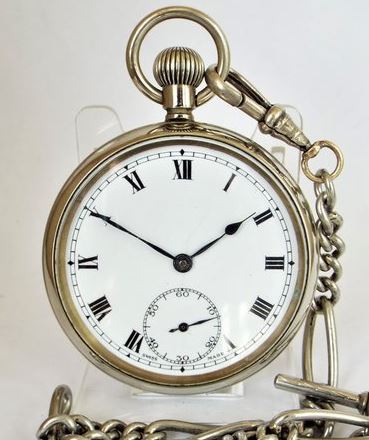
Maintaining the originality of the watch after purchase is also important. This is especially the case you bought the timepiece as an investment. Original watches are much more likely to retain or increase in value. Keep this in mind when serving antique watches. Always speak to the watchmaker before a service and reiterate the importance of only replacing parts as a last resort. Also, avoid excessively polishing the case of the watch because you could be removing the decades of patina that collectors desire. It is also generally a good idea not to add an inscription to the back of a watch. This will generally reduce its value to collectors unless the inscription is for a famous or historically significant person.
Research before you buy
Before buying an antique watch, it’s essential to do your research and have a clear focus on the specific type of watch you want. Knowing the history, brand, and model of the watch can help you determine its value and authenticity. It is important to become familiar with specialist terminology used in the watch industry to help you identify what you’re looking for and what you’re buying. You can also consult experts in the field or join online watch forums to gain more knowledge about antique watches. Doing your research beforehand can help you avoid buying fake or overpriced watches.
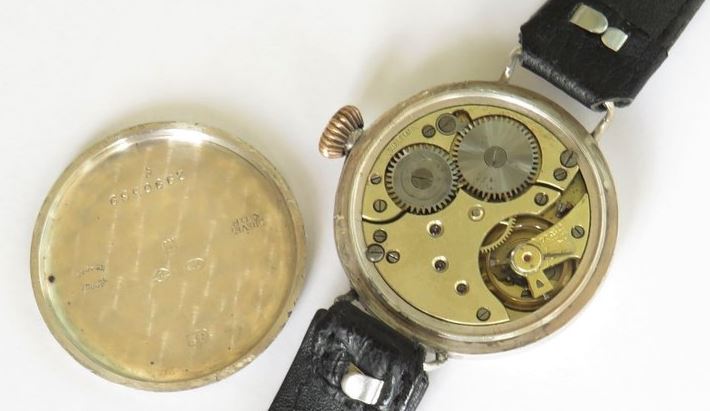
Understanding what you are buying, can also help if you later decide to sell your antique watch. The more information you can provide as a seller, the more valuable the watch becomes. Knowing the brand, both the retailer and the manufacturer, plus the movement is important to attract the attention of potential buyers. Finally, before you make a decision to buy an antique watch search around online auction sites for comparable timepieces to ensure you are paying a fair price. Watches were made in their hundreds of thousands so it is quite likely that a watch similar to the one you are buying has been sold elsewhere.
Always confirm the age of the watch
Confirming the age of an antique watch is an important step in determining its authenticity and history. There are a number of ways to do this:
Check for hallmarks: Look for any hallmarks or stamps on the watch case, which can indicate the maker, the year of manufacture, and the country of origin. Hallmarks will be visible if the watch case material is of precious metal. Solid gold or silver cases will have hallmarks, but plated or gold-filled cases will not. Dating the watch by this method is assuming that the case and the movement are from the same period.
Inspect the watch movement: One of the easiest ways to determine the age of a watch is by examining the movement. Watch movements have evolved over time, and each era has its unique style and features. The watchmaker’s signature and serial number can also help in determining its age.
Research the watch brand: Researching the brand and model of the watch can help determine its age. Many brands have a long history, and their watches have distinct features that can be used to date them. Note, that the brand name printed on the dial of the watch or the movement can actually be that of the retailer, not the watchmaker. However, if the name is that of a retailer examining old catalogues might help age the watch.
Serial numbers. If the movement has a serial number, this can help date the watch. However, serial numbers may not be available for many of the watch manufacturers that went out of business during the Quartz Crisis of the 1970
Seek the help of an expert: If you are unsure about the age of an antique watch, it is best to consult with a professional watchmaker or an antique watch dealer. They have the expertise and knowledge to accurately date and value antique watches.
Ask Questions
If you’re purchasing an antique watch from a website or a seller, it is essential to ask questions if there is anything you are unsure about. The description provided on the website may not be comprehensive enough to provide you with all the information you need before making a purchase. Therefore, it is important to ask questions to ensure you have all the necessary information before making the final decision. A trustworthy dealer should have no hesitation in answering any questions prior to purchase.
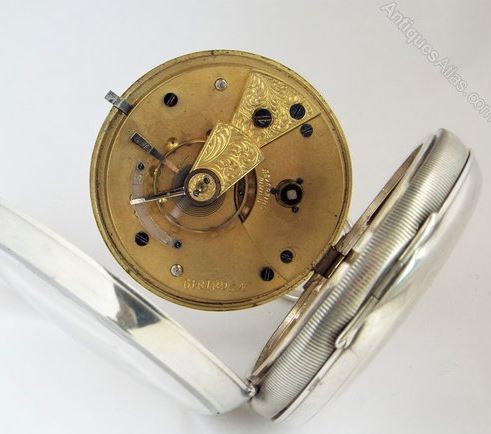
Examples of the type of questions you might ask include: What is the watch’s history? Who were the previous owners? What is the power reserve on a full wind? What is the accuracy of the watch over 24 hours? Where is the lever positioned on the regulator? When was the watch last serviced? The first two questions, maybe unknown. However, if the watch has a significant history or had a notable owner it may increase its value for resale. The next four questions are the most important and are interlinked. The power reserve should be 30+ hours. The watch should be accurate to within +/- 1 minute per 24-hour time period. Ideally, the regulator should be centred.
If the watch fails in any of these three categories, it will almost certainly need a service. Ideally, the watch should be serviced before the sale. Consideration should also be made for the ongoing servicing of the watch approximately every five years.
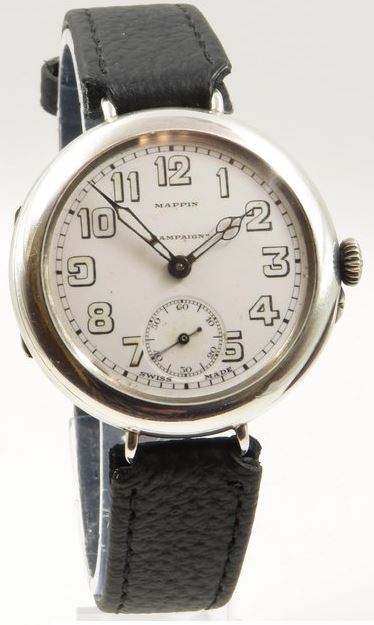
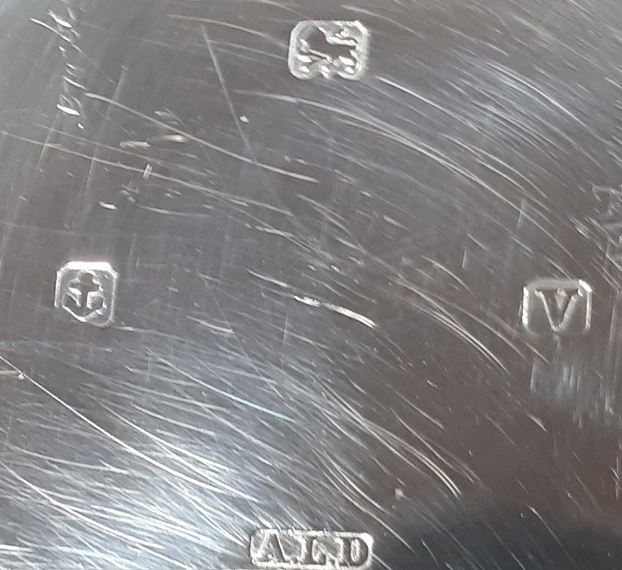

So it is reasonable to get a vintage or antique watch running accurately? I’m thinking of buying an antique pocket watch as a gift, but I am hoping that it will be a practical watch.
Hi Hari, absolutely, the watches in my collection are all accurate to within one minute per day, even though they are all over 100 years old. We do have a post on buying antique watches as gifts, please take a look and let us know if you have any antique watch questions. Thanks, Jason.